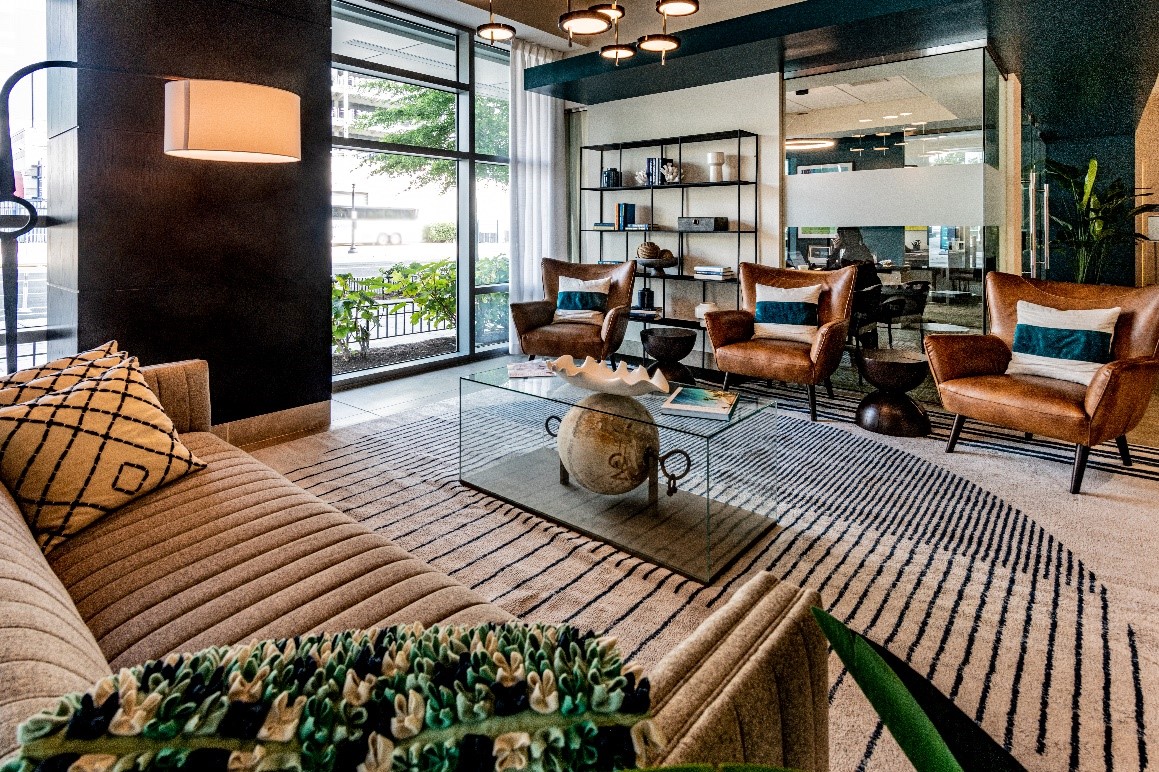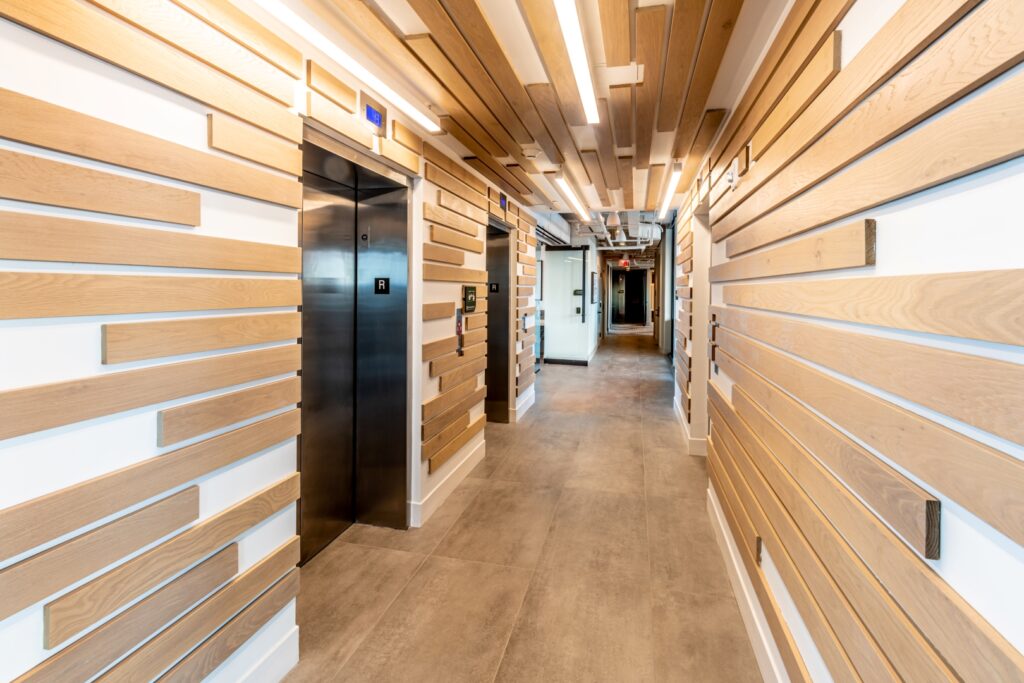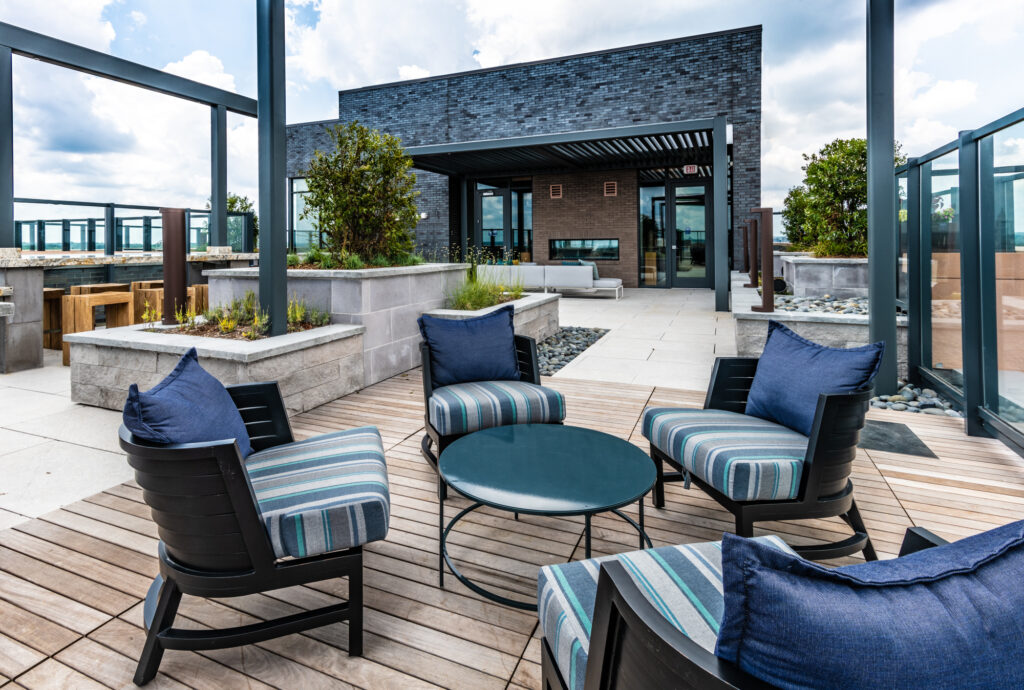
by Sabine Roy
Seniors used to live their golden years in the bosom of their family, and although it is still the case in many cultures, it is practically never seen in our current society. Seniors now found their homes in communities designed for them. In order to make this experience an improvement, we designers, need to recreate the personalized look of home while improving the functionality of these new communities.
Designing for senior living is a rewarding labor, but it requires a thoughtful approach to create spaces that are not only aesthetically pleasing but also functional, safe, and supportive of the unique needs of older adults. Here are a few tips to consider when designing for senior living:
1. Accessibility and Mobility
Ensure that spaces are designed with accessibility in mind. This includes features such as ramps, grab bars, wide doorways, and non-slip flooring to support mobility and independence.
2. Safety and Security
Implement safety features such as adequate lighting, emergency call systems, and handrails in hallways and bathrooms to prevent accidents and provide peace of mind for residents.
3. Comfort and Ergonomics
Choose furniture and fixtures that are comfortable, easy to use, and support good posture. Consider adjustable beds and chairs with armrests. Make sure the seat height is slightly higher than average to ease seating and standing from the seat. Use non-slip mats in the shower and a support railing.
4. Natural Light and Views
Incorporate plenty of natural light and views of nature to create a bright and uplifting environment. This can help improve mood, reduce stress, and support residents’ circadian rhythms.
5. Wayfinding and Signage
Make sure that spaces are easy to navigate with clear signage and intuitive wayfinding. Use contrasting colors and large, easy-to-read fonts for signage to aid older adults with visual impairments.

6. Social Spaces
Design communal areas such as lounges, dining rooms, and outdoor spaces where residents can socialize, engage in activities, and build a sense of community. Consider incorporating features like cozy seating areas, game tables, and gardens.
7. Memory Care Considerations
If designing for residents with dementia or Alzheimer’s, incorporate memory care principles such as color-coded corridors, memory boxes outside residents’ rooms, and familiar, homelike environments to support cognitive function.
8. Adaptable Design
Plan for flexibility in design to accommodate changing needs over time. Consider features like adjustable countertops, lever handles on doors, and easy-to-reach storage options.
9. Technology Integration
Explore the use of technology to enhance the living experience for seniors, such as smart home devices for safety and convenience, telehealth services, and communication tools to stay connected with family and friends.
10. Engage Residents in the Design Process
Whenever possible, involve future residents in the design process to ensure that their preferences and needs are taken into account. This can help create a more personalized and resident-centered living environment.

By incorporating these tips into the design of senior living spaces, you can create environments that promote well-being, independence, and a high quality of life for older adults.
Should the budget permit, here are some additional tips to further enhance the design for senior living and improve the residents’ experience even more.
11. Health and Wellness Amenities
Incorporate amenities that promote the physical and mental well-being of residents, such as fitness centers, walking paths, meditation rooms, and therapy spaces. Providing access to health services, wellness programs, and recreational activities can help seniors stay active and engaged.
12. Multi-Sensory Design
Consider the sensory experience of spaces by incorporating elements that engage sight, sound, touch, smell, and taste. Use textures, colors, scents, and sounds that are soothing and stimulating to create a holistic environment that supports overall sensory well-being.
13. Privacy and Personal Space
Design private areas within shared spaces to allow residents to have moments of solitude and relaxation. Consider incorporating private nooks, reading corners, or outdoor seating areas where residents can retreat when they need some quiet time.
14. Cultural Sensitivity
Consider the diverse cultural backgrounds and preferences of residents when designing senior living spaces. Incorporate elements of different cultures in the decor, activities, and food options to create a welcoming and inclusive environment for all residents.
15. Environmental Sustainability
Integrate sustainable design practices to reduce the environmental impact of senior living facilities. Consider energy-efficient lighting, water-saving fixtures, green building materials, and recycling programs to create a healthy and eco-friendly living environment.

16. Resident-Centered Care
Design spaces that prioritize the needs and preferences of residents, placing their comfort and well-being at the forefront. Create opportunities for residents to provide feedback, make choices, and participate in decision-making processes related to the design and operation of the community.
17. Staff Support Spaces
Let’s not forget to design functional and comfortable spaces for staff members who provide care and services to residents. Consider creating break rooms, workstations, and training areas that support the well-being and efficiency of staff members, ultimately benefiting the residents they serve.
18. Inter-generational Interaction
Foster opportunities for inter-generational interaction by designing spaces where residents can connect with younger generations, such as through shared activities, mentorship programs, or partnerships with local schools. These interactions can bring joy, energy, and a sense of community to senior living environments.
19. Aesthetics and Personalization
Pay attention to the aesthetics of the space, incorporating elements of beauty, art, and personalization to create a warm and inviting atmosphere. Consider displaying artwork created by residents, using comfortable and stylish furnishings, and adding plants and flowers to bring nature indoors.
20. Continuous Improvement
Regularly assess and evaluate the design of senior living spaces to identify areas for improvement and innovation. Seek feedback from residents, staff, and family members to ensure that the design continues to meet the evolving needs and preferences of the community.

By considering these additional tips, you can create senior living spaces that are not only functional and safe but also engaging, inclusive, and enriching for our older adults.
Sabine Roy is the founder and president of SR/A Interior Design.
